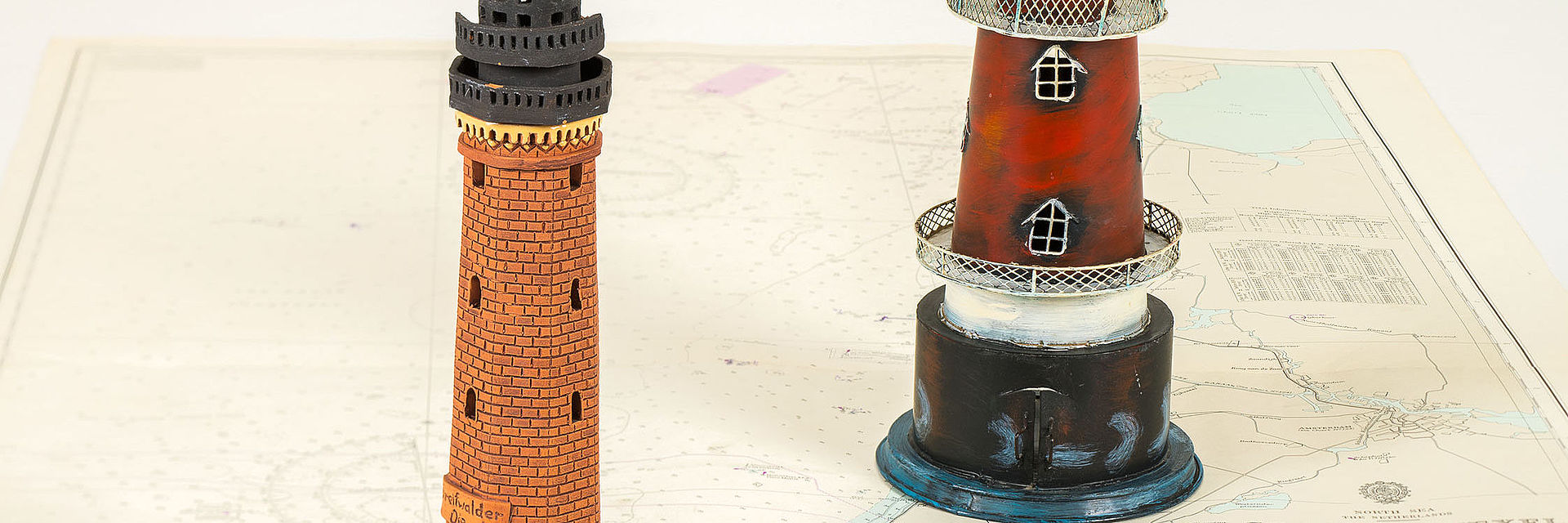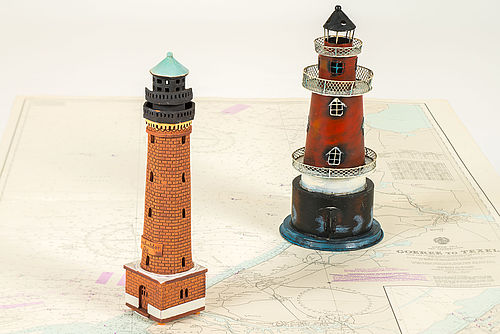
Lighthouse Models, second half of the 20th century
Object of the month April 2022

SDTB / C. Kirchner
Lighthouses are a source of great wonderment. Built as they are in remote and often lonely places, they conjure feelings of romance and longing. Models of lighthouses are very popular as collectibles or souvenirs, often in the form of snow globes or saltshakers.
The German Museum of Technology just recently acquired 52 such models from the maritime collection of a Berlin barge operator. They had been passionately collected over many decades.
Maybe such ardor arises from the fact that the world in model form seems more manageable or at least quite literally more "graspable". Be that as it may, real lighthouses help people find their way when sailing the ocean. They provide orientation by enabling ship crews to determine their relative position at sea.
Two lighthouses that are marked on a nautical chart are all that is needed to determine the position at sea by means of a cross-bearing fix (see sketch at the bottom of the display case). A compass is used to take the bearing of both objects simultaneously. These two compass bearings are then plotted on the chart using the marked lighthouses as references. Two so-called lines of position are thus created. The point where these lines intersect is the ship‘s position.
In addition to lighthouses, bearings can also be taken using other landmarks or sound and radio signals. The cross-bearing method is also used in flight navigation, land surveying and GPS. The principle is simple and applies to all areas of life: It takes at least two known signal generators or independent information providers to determine one's own standpoint.
